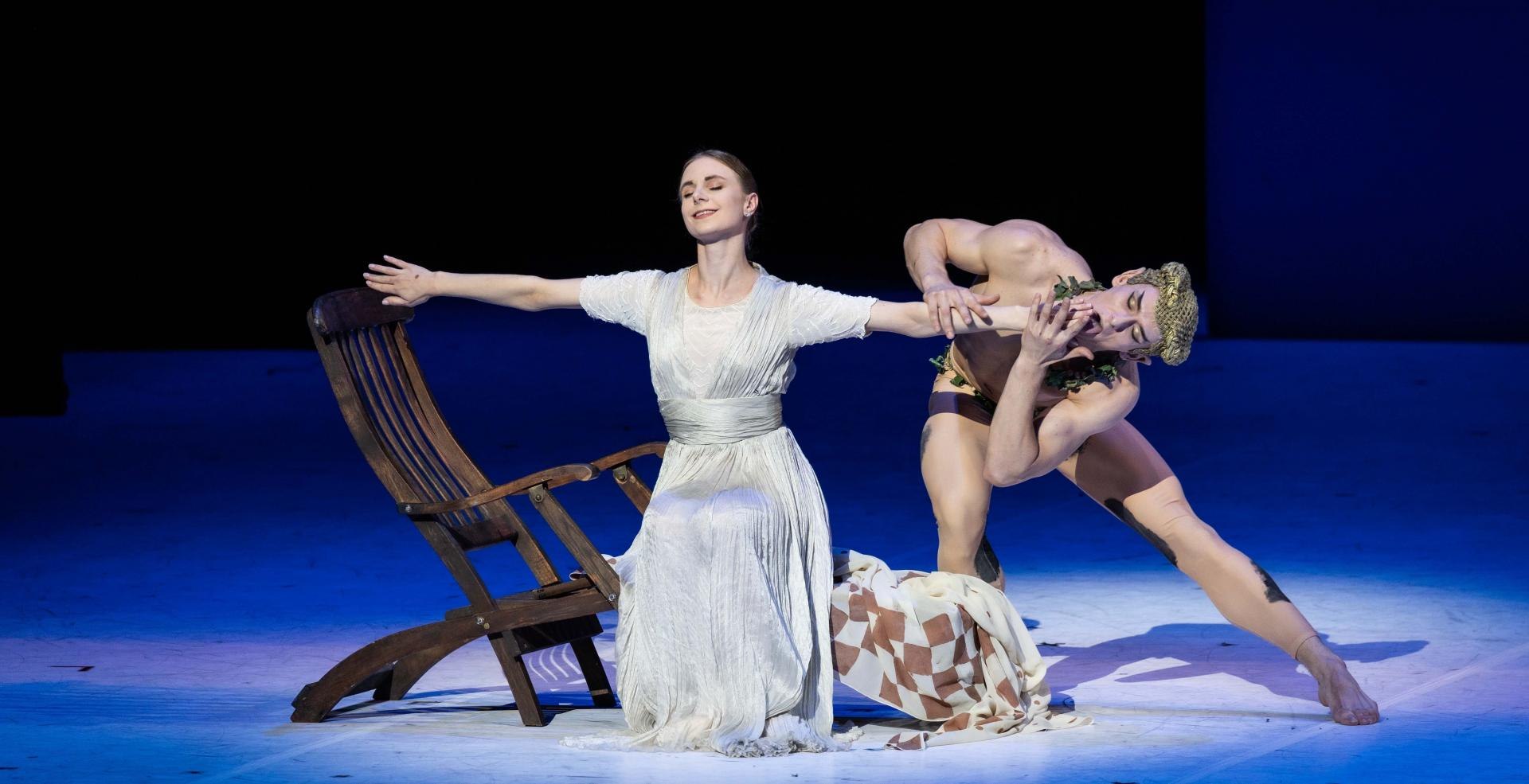Nijinsky by Neumeier
April 2026 | ||||||
|---|---|---|---|---|---|---|
Mo | Tu | We | Th | Fr | Sa | Su |
Nijinsky by Neumeier | Hamburg Ballett
Ballet in two acts
Choreography by John Neumeier based on sketches by Léon Bakst and Alexandre Benois
Approximate running time: 2 hours and 45 minutes
Nijinsky by John Neumeier captures the genius and torment of the legendary dancer
The Russian dancer and choreographer of Polish origin, Vátslav Nijinski (1889-1950), was one of the most gifted dancers in history. A soloist at the Mariinsky Theatre, invited to the Bolshoi, and principal dancer in Serge Diaghilev’s Ballets Russes, he was famous for his virtuosity and the depth of his characterizations. His unparalleled performances led him to be adored by fans, while his evocative and sensual choreography caused disturbances in the theaters of Paris.
In a tragic turn of events, Nijinski succumbed to the effects of schizophrenia and spent the rest of his life entering and exiting treatment centers. His final performance was at a hotel in Switzerland on January 19, 1919. He was 29 years old, and with a career of only 10 years, he became a true legend.
The acclaimed narrative ballet choreographer of the Hamburg Ballet for 50 years, John Neumeier, has explored this exceptional figure —the dancer, the choreographer, the human, the visionary— and his complexity in many of his creations.
This ballet, created by Neumeier in 2000, captures the biography of a soul bound to memories and associations, feelings and states. Neumeier's choreographic approaches aim to create a present of the past with new power dynamics and fields of tension that capture Nijinski's magic on stage, as well as his experiences beyond the theater.
In a production that defies categorization, Nijinsky is set in the glamour of early 20th-century Paris, where the sets and costumes create one world within another, full of opulence. A formidable theatrical spectacle and a tribute to the legendary dancer who changed the world of ballet forever.
Program and cast
Direction and choreography - John Neumeier
Scenery and costumes - John Neumeier based on sketches by Léon Bakst and Alexandre Benois
Production - The Hamburg Ballet
Symphony Orchestra of the Gran Teatre del Liceu
Conductor: Josep Pons
Program
Prelude No. 20 in C minor, Op. 28
Frédéric Chopin
Faschingsschwank aus Wien, Op. 26, 1st movement
Robert Schumann
Shéhérazade, Op. 35, 1st, 3rd, and 4th movement
Nikolai Rimski-Kórsakov
Sonata for viola and piano, Op. 147, 3rd movement
Symphony No. 11 in G minor, The Year 1905, Op. 103
Dmitri Xostakóvitx
Gran Teatre del Liceu
Barcelona's opera house, the Gran Teatre del Liceu, was founded on the Rambla in 1847 and has continued over the years to fulfil its role as a culture and arts centre and one of the symbols of the city.
Today it is publicly-owned (by the Government of Catalonia, Barcelona City Council, Barcelona Provincial Council and the Ministerio de Educación, Cultura y Deporte) and administered by the Fundació del Gran Teatre del Liceu which, in addition to the aforementioned bodies, incorporates the Patronage Council and the Societat del Gran Teatre del Liceu (the old society of owners).
Origins: From 1837 to 1847
The Liceu evolved out of the Sociedad Dramática de Aficionados (Society of theatre-lovers) set up in 1837 at the instigation of Manuel Gibert in the former convent of Montsió by members of the National Militia, an organization of armed citizens with liberal leanings.
Barcelona's economy and population were growing fast at the time and the city needed a music conservatory. This led to the conversion of the Sociedad Dramática into the Liceo Filármonico Dramático Barcelonés de S.M. la Reina Isabel II (Barcelona Dramatic and Philharmonic Lyceum of HM Queen Isabel II). In addition to its theatrical activities, the new organization cultivated Italian-style singing and music.
The building on the Rambla
The original building was solemnly opened on 4 April 1847. The plans had been drawn up by Miquel Garriga i Roca, subsequently assisted by Josep Oriol Mestres. The project was funded by selling shares, which meant that many of the boxes and seats were to be privately owned. The shareholders formed the Societat del Gran Teatre del Liceu, known as the “Societat de Propietaris” (Society of Owners), which was in sole charge of running the Gran Teatre del Liceu from 1855 onwards, after it was legally separated from the Conservatori del Gran Teatre del Liceu.
The theatre was operated by impresarios who were given a concession to stage a specific number of productions in exchange for the proceeds from the sale of tickets not reserved for the Societat itself. This system was to endure until 1980.
The creation of the Consortium
By the last quarter of the 20th century this management system was no longer viable. In 1980, to avert the danger of the disappearance of an institution of such worldwide cultural renown, the Generalitat Catalonia's first government in modern times – set up a consortium, the Consorci del Gran Teatre del Liceu, which also incorporated Barcelona City Council and the Societat del Gran Teatre del Liceu. Barcelona Provincial Council joined the Consortium in 1985, followed by the Spanish Ministry of Culture in 1986. From then on the Consortium took over operation of the theatre.

 EN
EN DE
DE IT
IT FR
FR ES
ES RU
RU JP
JP RO
RO
